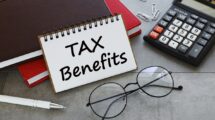
What does pasta have to do with RRSPs? Talbot Stevens, finance guru, and Sans Souci, a financial-services group of companies that aims to empower Canadians with financial literacy, can tell you all about it.
Last month Sans Souci hosted its first Worry-free Wealth seminar in Vaughn, ON, with Talbot Stevens—who is also an author—as keynote speaker. While there are many aspects of achieving worry-free wealth, Talbot Stevens explains the concept of pasta and how it can help boost your retirement savings.
A key concept that’s overlooked by most investors is that when you’re saving for retirement, you should never put dry pasta in your RRSP.
Dry pasta?
Dry pasta illustrates a fundamental understanding that’s important when investing in general, and introduces one of the behavioural risks of RRSPs. Have you noticed when you cook pasta it expands to be much larger than it was dry? Anyone who as ever cooked pasta knows, as it soaks up water, it can become twice as big. But what happens when you let it dry out? It returns to its normal size.
Dollars you earn are a lot like pasta. You’re paid with dollars that haven’t been taxed yet. Before-tax dollars are like larger, wet, cooked pasta. But after federal and provincial income taxes suck all the water out, you’re left with after-tax dollars – smaller, dry pasta.
One of the secrets of the rich is they always think about the impact of taxes, and the big difference between before-tax dollars and after-tax dollars.
But what does this have to do with RRSPs?
If you don’t put the equivalent before-tax amount in your RRSP, you end up unknowingly investing less than you start with, less than you intended, and less than you need to.
Let’s try and illustrate the behavioural issue and the opportunity to significantly increase your retirement funds. Let’s say “Joe” is in a 40 per cent tax bracket, and has $3,000 to add to his retirement savings. If he chooses the conventional route and puts the three grand in his RRSP, this should produce a tax refund of 40 per cent or $1200.
In addition to the real benefit of tax-deferred investment growth, contributions to an RRSP produce a tax deduction that reduces your taxable income. For the majority of Canadians who have already prepaid income taxes through their employer, this means that after filing income taxes, they’ll receive a tax refund. Unfortunately, too many Canadians actually use RRSPs more for the immediate benefit of saving taxes than as a tax efficient way to save for retirement.
So then the question is, what do most Canadians do with their RRSP refunds? Help pay off a vacation? Or maybe clear up some expenses from the Christmas season? If we look at Joe, we know he contributed $3,000 to his RRSP and then, like most people, spends the refund, we can assume he put $3,000 towards his retirement. But here is the critical question that often is overlooked: Did he invest three thousand before-tax dollars, or after-tax dollars?
We know that RRSPs are before-tax dollars that are taxed upon withdrawal, and we also know that Joe spent his $1200 refund. This really means that the actual total contribution Joe put towards his retirement after-tax would only be $1800, despite the contribution receipt and the investment transaction both indicate a $3,000 contribution.
It’s easy to be misled into thinking that if you start with $3,000 and put it into an RRSP, you’ve invested all of the money you started with and intended for retirement. One of the behavioural risks of RRSPs is that by spending the refund, you end up converting after-tax dollars to less valuable before-tax dollars, probably without even realizing it.
This story is an adjusted excerpt from The Smart Debt Coach written by finance guru Talbot Stevens for Fifty-Five Plus Magazine.
This is just one concept that can help you on the path to worry-free wealth. Looking for more information on RRSPs or more financial knowledge? Sans Souci is hosting the next Worry-free Wealth seminar May 14 at the Mississauga Convention Centre. This May seminar features keynote speaker Jonathan Weaver, a real-estate investor, finance coach and founder of Canada’s first Registered Disability Savings Plan (RDSP).
For more information about the Worry-Free Wealth seminar series, including how to register, please visit www.worryfreewealth.ca.






